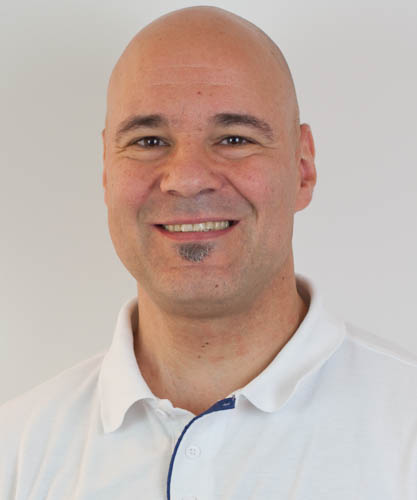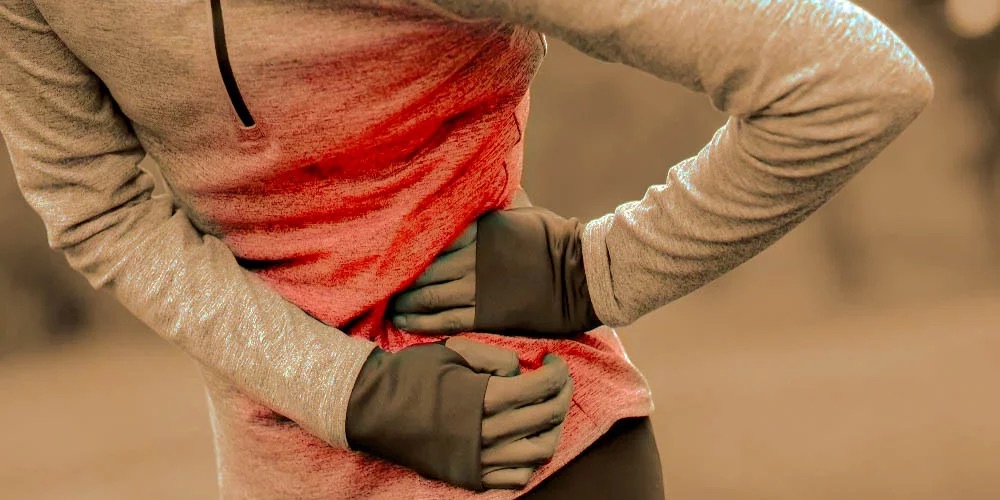Side stitch can be alleviated. The right choice of drinks and their quantity also play an important role.

Author: Roberto Llano, MD, Specialist in General Internal Medicine FMH, Sports Medicine SGSM, Head of Medbase Bern Westside
About one in five runners suffers from it during a race, but its origin has puzzled doctors since ancient times. In fact, as soon as they want to examine it more closely, the annoying disorder has already disappeared again. Therefore, there is little scientific evidence of side stitches. What is certain, however, is that the stabbing pain, sometimes described as dull or pulling, is harmless. It quickly stops as soon as the athlete takes a break, but can cost valuable time in competition.
The Roman philosopher Pliny the Elder had already described what is now called ‘ETAP’, or ‘exercise-related transient abdominal pain’. Contrary to what the name suggests, side pain can also occur in the middle of the abdomen. However, it is usually felt in the middle or upper abdomen, most often on the hips.
Endurance athletes are most affected
It is mainly endurance athletes who suffer from this pain, especially if they participate in sports that involve regular body shaking and/or rotational movements of the trunk, such as running, horse riding or basketball. Vibrations alone cannot be the cause, as swimmers also frequently complain of lateral pain. Pure strength athletes, on the other hand, are usually spared from it.
Those who often suffer from side stitches should therefore train their trunk stability in particular. A support belt on the trunk can also help reduce trunk mobility and decrease the onset of lateral pain.

Experience alleviates the problem
Children, adolescents and young adults are more likely to suffer from ETAP than the elderly. This is why the author of a professional article once gave a piece of advice (not really meant seriously) for treatment: ‘get older’.
What can be done more quickly, however, is to train, because the problem can be eliminated, at least in part. Inexperienced or untrained athletes are affected more often than well-trained ones, and competitive athletes rarely suffer from ‘ETAP’.
What are the causes?
There are many different theories about the origin of this pain. Some of them seem rather funny from today’s point of view: a ‘constitutional weakness’ or ‘unnatural breathing’, for example, were the causes found by doctors in the past. In the meantime, however, pulmonary function tests have shown that neither lung volume nor other pathological respiratory values are impaired in the case of lateral pain. Blood stasis in the liver or spleen or spasms of the small muscles between the ribs have also been hypothesized as causes, but are probably as unfounded as the hypothesis of diaphragmatic spasm due to a circulatory disorder.
It is most likely the full intestinal loops that trigger the pain. They cause mechanical irritation of the peritoneum, which is found as a thin tissue on the stomach, intestines and other organs in the abdominal cavity. This hypothesis is supported by the fact that side stitches often occur when athletes have eaten or drunk before training. In particular, hypertonic, carbohydrate-rich liquids, such as fruit juices made from juice concentrates, appear to promote the pain.
What can be done?
If you are prone to side stitch, it is best not to drink large quantities of liquids two or three hours before training or a competition and to avoid hypertonic drinks. If you experience a side ache, it is helpful to breathe deeply, slow your pace, apply light counterpressure on the painful area with your hand, bend forward or lengthen your torso. The quickest way to eliminate the pain is to briefly stop physical activity until the pain ceases.
 Tips
Tips
- Strengthen the abdominal muscles, e.g. with daily crunches.
- Strengthen your core muscles, e.g. with forearm and hip exercises.
- Do not overdo it and gradually increase the speed and intensity of your workouts.
- If the pain does not subside quickly despite stopping training, it is possible that there is another (possibly serious) health problem at the root, such as a gastrointestinal haemorrhage or heart attack.
Who is Medbase?
Medbase is the largest multidisciplinary sports medicine network in Switzerland and offers specialised sports medicine services for athletes, clubs and sports associations of all levels of activity in the areas of sports medicine, sports physiotherapy, performance diagnostics and training advice.


